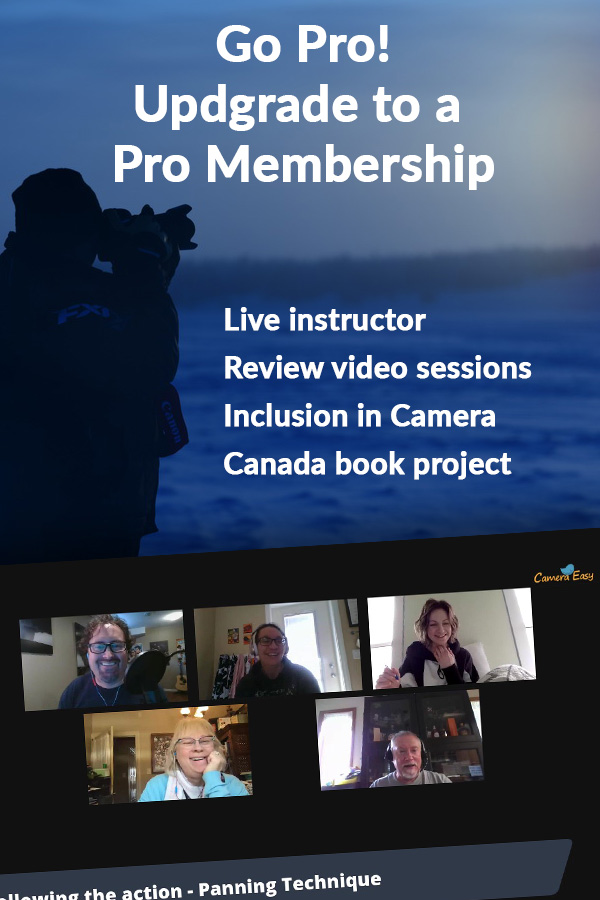Intro Course lesson 7
The Cheat Sheet
Lets make sense of the numbers
Your Camera Safety Net
Cheating was not allowed in high school. I encourage it!
Overview of the cheat sheet
At the bottom of this page you will find a downloadable pdf of the Camera Easy Cheat Sheet. Save it and print it. Here are the big points:
- There are 3 columns on the front side. ISO, Aperture and Shutter Speed. These are the BIG THREE.
- When taking photos we always work left to right. ISO first, Aperture second and then set the Shutter Speed last.
- The Camera Easy Cheat Sheet shows stops of light. In each of the three columns, as the settings are adjusted up on the sheet, the image will get twice as bright. In each column, as the settings are adjusted down the sheet, the image brightness will be cut in half.
- The Camera Easy Cheat Sheet shows full stops of light, however your camera will have one third (1/3) increments, meaning your camera is more precise than the cheat sheet.
- On Page 2 of the Camera Easy Cheat Sheet, you will find a yellow bar at the bottom with the Master Procedure for taking photos.
- In the third column (Shutter Speeds) the ” symbol refers to seconds. For example 30″ means a half minute, 30 seconds.
Trouble Shooting
Using a camera is a constant process of trouble shooting. The Camera Easy Cheat Sheet is your guide to get you through it. On Page 2 is the Trouble 3 List. The Trouble 3 List are the main issues that happen to photographers when shooting. Remember the Trouble 3 and you will solve most of your problems
- Trouble 1 – The photo is too dark or too bright. Solution – You need to adjust your shutter speed. If the photo is too dark, you need to move up on the Cheat Sheet to a slower shutter speed. If the image is too bright, you need to move down on the Cheat Sheet to a faster Shutter Speed.
- Trouble 2 – The Camera will not shoot, I press the shutter button but it doesn’t take a photo. Solution – Assuming the camera is powered on, battery is charged and you have space on the memory card, the only reason the camera won’t shoot is that the camera is unable to focus. Put another way, you need to do a better job of focusing. If you are too close to the subject or the camera doesn’t have anything to focus on (Lesson 9 – Auto focus mode) then the camera will not shoot
- Trouble 3 – When you say “colour”, “Blue” or “Yellow” or there is any issue with the colour of your photo… Solution – The solution is White Balance. Colour is adjusted using white balance. The trouble shooting trigger for you will be any time you say the words colour, blue or yellow.
Master Process
At the bottom of Page 2 of the Camera Easy Cheat Sheet, there is a yellow bar that highlights the Master Process for taking photos.
- Select an Exposure Mode
- Set the White Balance
- Set ISO, Aperture and Shutter Speed
- Take a Test shot and adjust the Shutter Speed if needed
- Now, you can Focus and Shoot.

Simplifying the Cheat Sheet – ISO
Lets dive a little deeper and make this cheating as easy as possible. In the blue ISO column of the cheat sheet, you will see that the words use in low light are next to the ISO values of 800-1600. Since we need to set the ISO based on the amount of available light, the decision needs to be easy. Night skies, indoor sports, your living room or anywhere that the light is low, requires a higher ISO.
Next to the ISO values of 200-400 the words say use in bright light. Again, we set the ISO based on available light. Therefore, when the light is bright we can use the higher quality, lower valued ISO settings such as 100, 200 or 400.
EXERCISE: Answer these questions about ISO settings
1) You are shooting indoors in your kitchen or living room in the evening, what ISO value would you use? Answer: 1600
2) You are shooting at the lake during summer. Its daytime. What ISO value makes sense? Answer: 100 or 200
3) You are photographing the girls volleyball game at the highschool gym. What ISO do you use? Answer: 1600
4) You are taking photos of flowers in your yard. You are shooting in direct sunlight, what ISO do you use? Answer: 100 Then you move to the other side of the house, in the shade, its still bright but not as much as the sunlight. What ISO do you switch too? Answer 400.
Simplifying the Cheat Sheet – Aperture
Lastly, I want to simplify the process even further. Blur kills more photos than anything else. Unintentionally blurred images are often the result of shutter speeds that are just too slow. The larger the aperture (smallest f-number) the more light that comes into the camera and therefore the faster the shutter speed. All of this means that in most shooting situations, we want to maximize the aperture to get the fastest possible shutter speed.
On the Camera Easy Cheat Sheet, there is a black arrow in the centre, green column that points to the region of maximum apertures (smallest f-number). This is where we set the aperture for most shooting or when we have a doubt about the correct aperture. You cannot go wrong, setting the aperture to its maximum value.
If in doubt, set the aperture to max.


